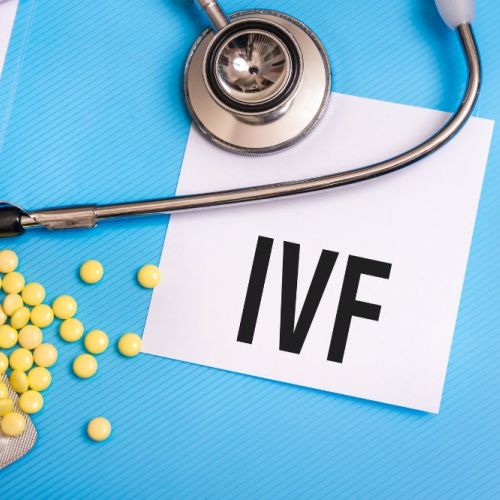How Successful Is Frozen Embryo Transfer?

The first frozen embryo transfer occurred in the 1980s, and since then the procedure has improved in its ability to successfully result in pregnancy. In fact, research shows the success rate of a frozen embryo resulting in a live birth is between 57% and 63%.
Here at California Center for Reproductive Health — with offices in Encino, Valencia, and West Hollywood, California — our reproductive specialists use precision and experience to successfully conduct frozen embryo transfers as part of many in vitro fertilization procedures.
Here’s why you might choose to freeze embryos and what happens during the process.
Why would I consider a frozen embryo transfer?
When you undergo in vitro fertilization, it can result in multiple viable embryos. You might choose to freeze any that are not used during a current cycle for future IVF cycles.
Freezing embryos also gives our specialists more time to make sure the woman’s uterus is prepared to successfully accept an embryo for implantation. We may use hormones or monitor her natural cycle to optimize the uterus.
When embryos are frozen, there’s less pressure to get the uterus ready on a specific calendar. The embryos are thawed when the woman’s system is ready to accept them. In some cases, this may mean months or years after the freezing process.
Embryos are often frozen when you decide to undergo PGT, which is preimplantation genetic testing, because it can take several days and up to a week to get the results. PGT helps you determine whether an embryo is viable, healthy, and free of genetic mutations.
Embryo freezing also helps a family preserve their future fertility. In couples in which one partner is undergoing cancer treatment, hormone therapy, or gender affirmation surgery, embryo freezing gives them a chance for a pregnancy that better fits their timeline.
What happens during a frozen embryo transfer?
An embryo is an egg that’s been fertilized in a lab and is ready to implant in the uterus. Freezing it halts the embryo’s developmental process.
Not all embryos are frozen at the same time. Some may be frozen the day after fertilization (Day 1), at cleavage stage (Day 3), or when they become blastocysts (Day 5). We determine when to freeze embryos, how many embryos to freeze at once, and when to thaw them based on several factors, including your age and general embryo health.
The time when we thaw the embryos for transfer depends on when and how your embryos were frozen. Some may need more time to grow in the lab before being placed in your uterus.
Prior to receiving the frozen embryo, we make sure the woman’s menstrual cycle is at a point that best supports a pregnancy. Often we give hormones that help to optimize the endometrium, or lining of the uterus. Blood tests and ultrasounds help us monitor how the woman’s body responds so we can pick just the right time for implantation.
We take careful consideration when transferring embryos to a woman’s uterus. The reproductive specialists want to transfer a number that gives you the highest chance of achieving a successful pregnancy but the lowest chance of pregnancy with multiples.
How successful is frozen embryo transfer?
Remember that no assisted reproductive technology (ART) can 100% guarantee a pregnancy or result in delivery of a healthy, full-term newborn.
The success of frozen embryo transfer depends on the quality of the embryos. Women younger than 35 tend to produce higher quality embryos, but if these embryos are implanted when a woman is older, they still have a high chance of successful implantation. If you choose to freeze your embryos after the age of 35, the chance of having lower-quality embryos increases.
At California Center for Reproductive Health, we want to do everything possible to help you achieve the family you desire. Please reach out to learn more about frozen embryo transfer, in vitro fertilization, and other ART.
Eliran Mor, MD
Reproductive Endocrinologist located in Encino, Santa Monica, Valencia & West Hollywood, CA
FAQ
Reproductive endocrinology and Infertility is a sub-specialty of Obstetrics and Gynecology. In addition to managing medical and surgical treatment of disorders of the female reproductive tract, reproductive endocrinologist and infertility (REI) specialists undergo additional years of training to provide fertility treatments using assisted reproductive technology (ART) such as in vitro fertilization.
Reproductive endocrinologists receive board certification by the American Board of Obstetrics and Gynecology in both Obstetrics and Gynecology and Reproductive Endocrinology and Infertility.
In general, patients should consider consulting with an REI specialist after one year of trying unsuccessfully to achieve pregnancy. The chance of conceiving every month is around 20%, therefore after a full year of trying approximately 15% of couples will still not have achieved a pregnancy.
However, if a woman is over the age of 35 it would be reasonable to see a fertility specialist earlier, typically after 6 months of trying.
Other candidates to seek earlier treatment are women who have irregular menses, endometriosis, fibroids, polycystic ovary syndrome (PCOS), women who have had 2 or more miscarriages, or problems with the fallopian tubes (prior ectopic pregnancy).
Approximately 1/3 of the time cause for infertility is a female factor, 1/3 of the time a male factor, and the remaining 1/3 a couples’ factor.
At CCRH, we emphasize the importance of establishing a correct diagnosis. Both partners undergo a comprehensive evaluation including a medical history and physical exam.
Furthremore, the woman’s ovarian reserve is assessed with a pelvic ultrasound and a hormonal profile. A hysterosalpingogram (HSG) will confirm fallopian tube patency and the uterine cavity is free of intracavitary lesions. A semen analysis is also obtained to evaluate for concentration, motility, and morphology of the sperm.
Additional work up is then individualized to direct the best possible treatment option for each couple.
In vitro fertilization (IVF) is the process that involves fertilization of an egg outside of a woman’s body.
The process starts with fertility drugs prescribed to help stimulate egg development. In your natural cycle, your body is only able to grow one dominant egg, but with stimulation medication we can recruit multiple eggs to continue to grow. After about 8-10 days of stimulation, the eggs are surgically retrieved and then fertilized with sperm in a specialized laboratory. Fertilized eggs are then cultured under a strictly controlled environment within specialized incubators in the IVF laboratory for 3-5 days while they develop as embryos. Finally, embryos (or an embryo) are transferred into the uterine cavity for implantation.
Before deciding if IVF is the right choice, it’s important to sit down with an REI specialist to discuss available treatment options. For some people, other methods such as fertility drugs, intrauterine insemination (IUI) may be the best first choice treatment. At CCRH, we believe each individual couple is unique and not everyone needs IVF.
While not painful, the fertility medications may some side effects including headaches, hot flashes, mood swings, and bloating. The injection sites may also bruise.
Unfortunately, no. Many people think once they start IVF it’s a matter of time that they will be pregnant and have a baby. But according to national statistics per the Society of Assisted Reproduction (SART), on average 40% of assisted reproduction cycles achieve live births in women under age 35. The chances of success then continue to decrease with advancing age.
At CCRH, we employ only evidence-based interventions to ensure patient safety and optimal outcome. While we cannot guarantee a baby, we guarantee that you will receive the best, most advanced, personalized care to help you maximize your chance of a baby.
The average IVF success rate (success measured in live birth rate) using one’s own eggs begins to drop around age 35 and then rapidly after age 40. This is due to the decline in egg quantity and egg quality as a woman ages.
Our clinic’s success rate consistently beats the national average year after year.
Individual insurance plans often do not have any coverage for infertility treatments. If you have a group plan, you can call members services to see if they have coverage for infertility (including consultation/workup and IVF).
After your consultation with our REI specialist, one of our dedicated account managers with sit with you to go over the cost of treatment.




